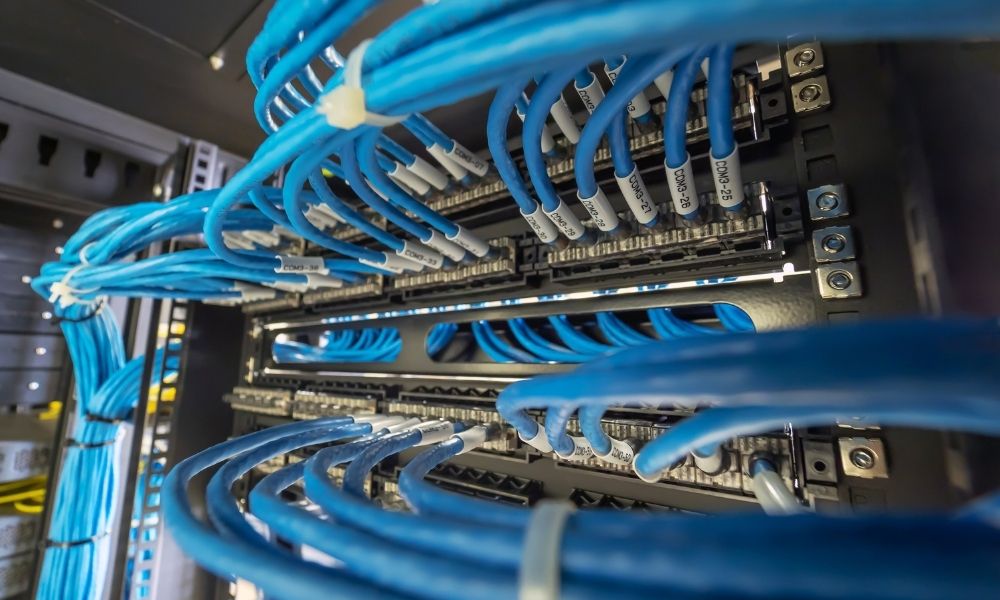
Why Structured Cabling is the Backbone of Modern IT Infrastructure
Without a solid cabling foundation, even the most advanced technologies can collapse under inefficiency and downtime. Just as a skyscraper needs a strong foundation to stand tall, a modern IT ecosystem requires structured cabling to operate efficiently, scale seamlessly, and future-proof the business.
This blog explores what structured cabling is, why it is crucial, and how it empowers organizations to stay competitive in the digital age.
What is Structured Cabling?
Structured cabling is a standardized approach to building a comprehensive and organized cabling system that supports voice, data, video, and other IT services across an organization. Unlike the “spaghetti mess” of random cables often seen in small offices, structured cabling follows globally recognized standards such as TIA/EIA-568.
A structured cabling system typically includes:
-
Horizontal Cabling – Connects workstations to telecommunications rooms.
-
Vertical (Backbone) Cabling – Links different floors or buildings.
-
Work Area Components – Outlets, patch cords, and connectors.
-
Telecommunications Rooms – Enclosures housing networking equipment.
-
Entrance Facilities – Cables connecting the organization to external services.
By following these standards, businesses ensure that their networks remain organized, flexible, and scalable, reducing the long-term cost of IT operations.
Why Structured Cabling Matters in Modern IT
1. Reliability and Reduced Downtime
Studies show that nearly 70% of network problems stem from poor cabling. Tangled wires, unlabeled connections, and outdated cable types make troubleshooting a nightmare. Structured cabling eliminates this chaos by providing clear pathways and documentation, making it easier to detect and resolve issues quickly.
👉 Example: A multinational office with structured cabling can fix a faulty connection in minutes, while a company with messy cabling might face hours of costly downtime.
2. Scalability for Business Growth
Technology evolves rapidly—new devices, applications, and services are constantly being introduced. With structured cabling, businesses can expand their network without ripping everything apart. Adding new users, workstations, or even entire departments becomes simple and cost-effective.
👉 Example: A university that invested in structured cabling could easily add new computer labs without having to redo the entire campus network.
3. Cost Savings Over Time
Although structured cabling may require a higher upfront investment, it drastically reduces costs in the long run. Organized infrastructure minimizes downtime, lowers maintenance costs, and decreases the need for repeated installations.
👉 Example: A retail chain that adopted structured cabling reported 40% fewer outages and cut troubleshooting costs by thousands annually.
4. Support for High-Speed Applications
Modern businesses rely on bandwidth-heavy applications such as cloud services, VoIP, and video conferencing. Structured cabling ensures that these applications run smoothly without bottlenecks. Cat6, Cat6a, and fiber optic cables, when installed properly, deliver the high performance required for today’s data-driven world.
5. Future-Proofing the Business
With technologies like IoT, smart offices, and 5G rapidly emerging, businesses need a network backbone that can handle increasing data demands. Structured cabling provides the flexibility to upgrade components without replacing the entire system, making it a strategic investment in long-term IT resilience.
Real-World Examples of Structured Cabling Benefits
-
Case 1: A School Network Expansion
A school in Nairobi installed structured cabling across its campus. When new computer labs were introduced, the IT team connected them seamlessly without additional rewiring. The scalability saved time and reduced installation costs. -
Case 2: Office with Messy Cabling
A law firm operated on ad-hoc wiring for years. Frequent downtime and troubleshooting delays slowed productivity. After upgrading to structured cabling, network reliability improved significantly, and IT support costs dropped by 35%. -
Case 3: Data Center Operations
In data centers, structured cabling isn’t optional—it’s mandatory. With thousands of servers and switches, structured cabling ensures optimal airflow, efficient troubleshooting, and maximum uptime, which are critical for 24/7 operations.
Best Practices for Implementing Structured Cabling
-
Follow Standards (TIA/EIA-568) – Ensures compatibility and quality.
-
Label Everything – Makes troubleshooting easier.
-
Plan for Growth – Install extra capacity for future expansion.
-
Use Quality Materials – Cheaper cables lead to long-term inefficiencies.
-
Hire Certified Installers – Professional installation prevents costly errors.
Conclusion
In the digital age, structured cabling is not a luxury—it is the backbone of modern IT infrastructure. From reducing downtime to enabling future scalability, it ensures that businesses remain competitive, efficient, and ready for growth. Just as a strong building foundation guarantees stability, structured cabling lays the groundwork for all technological advancements that follow.